2024 State of Slack Support
Learn how top B2B support teams are utilizing shared Slack channels for better and faster customer support. We analyzed our top 100 Slack support power users to provide benchmarks that you can use for your support teams.
High Level Overview
B2B companies, especially those offering SaaS or technical products, are increasingly creating shared Slack channels with their customers. These channels are used for a combination of customer support, customer success, solutions engineering, and sales.
- Customers love this because they get support where they work.
- Sales teams love this because it speeds up sales cycles.
- Customer success teams love the easy access to customers.
Meanwhile support teams have historically despised Slack support. Existing support platforms like Zendesk, Intercom, and Salesforce Service Cloud are unable to track tickets & conversations in Slack or other new B2B channels like Microsoft Teams.
When we started Pylon we aimed to change this with a stated goal of making support over new B2B channels, like Slack and Microsoft Teams, as easy as email. Two years later, we've done it. Slack and Teams support is now simple, you just need the right tooling.
We're releasing these benchmarks to showcase insights on Slack support power users.
Key Takeaways

Why Is Slack support important?
As of 2023, over 100,000 companies are using Slack Connect including 77% of the Fortune 100, and that usage is growing 4x year over year. If you use Slack internally, it’s likely that you already have shared Slack channels with your own vendors, partners, prospects, or customers.The fastest growing companies are defaulting to Slack as the first channel they offer to their customers, and making it a long-term channel reserved for their most valuable customers.
The fastest growing companies are defaulting to Slack as the first channel they offer to their customers, and making it a long-term channel reserved for their most valuable customers.
"Customers LOVE Slack. It’s easy for them to pop into the channel and ask questions and it keeps them highly engaged with Hightouch. We are able to connect and tackle issues together in Slack like we are on the same team."
Teresa Nesteby, Head of Success Engineering (Hightouch)
Where is Pylon getting this data?
In Q1-Q3 2024, our top 100 Slack support power users collectively managed

That’s a lot of channels (going up every day) but let’s dig into this data a bit more.
Disclosures for the data nerds
- The “Top 100 Accounts” referenced below are sorted by an Account’s number of customer Slack channels connected to Pylon.
- First Response Time (FRT) and Time to Resolution (TTR) metrics are calculated using the median value for closed tickets. For technical products, some tickets take weeks or months to resolve so using average values skews the data too much.
- Time to Resolution is calculated using a support team’s business hours. So if a ticket was created Friday and answered on Monday we count how many business hours it took for resolution.
- Industry data splits may have some overlap. For example, an Analytics company may also be counted as an AI company.
- Funding round splits will always equal to 100.
How many customers are B2B companies managing on Slack?
Most companies today manage fewer than 30-50 external Slack channels. Below we’ll showcase the top 100 accounts to showcase what Slack support operations look like.
Our top 100 accounts have ~181 customer Slack channels
Series A companies tend to have the most channels, while later stage companies tend to have less.
We suspect that the number decreases at Series B+ for a couple reasons:
- Companies start limiting Slack support to their largest accounts
- These companies started later, and only started offering Slack support more recently
Pre-Seed and Seed companies seemingly have a shocking number of channels. Keep in mind that this top 100 accounts list filters for companies with the highest number of channels.
Security and Fintech vendors are power users of Slack Support
When we break down the the top 100 accounts by industry, we don’t see a terribly wide gap in number of customers managed on Slack.
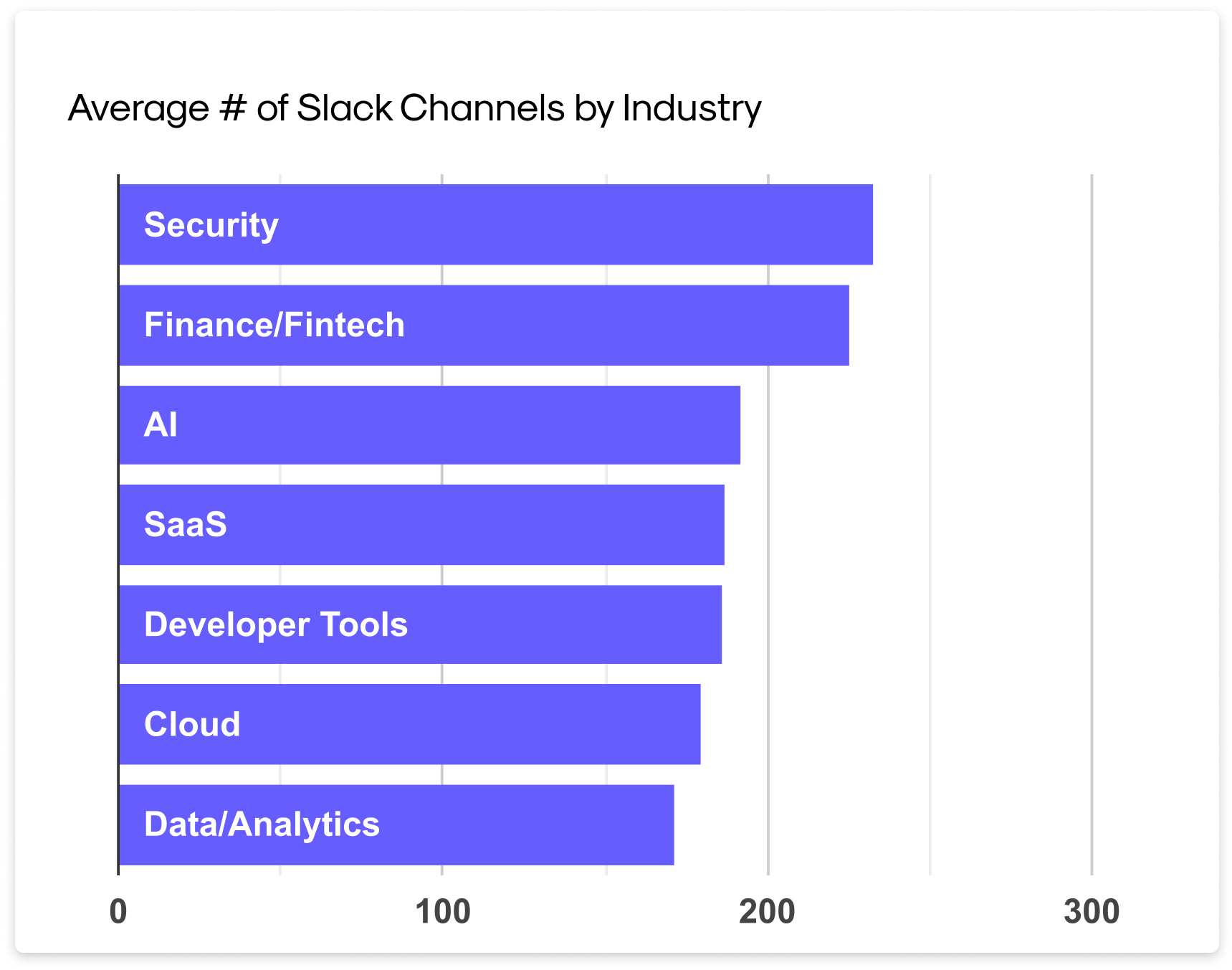
Something interesting to note: industries that care the most about privacy like the Security and Fintech lean more into Slack support opting to offer a white-glove experience to their customers.
How fast is Slack support?

While there is not much published B2B support metrics out there, we think a 9 minute First Response Time for Slack messages is quite fast.
Some B2C support metrics show that users expect email responses within 24 hours and under 60 minutes for social channels.
Pre-Seed Companies have the longest FRT
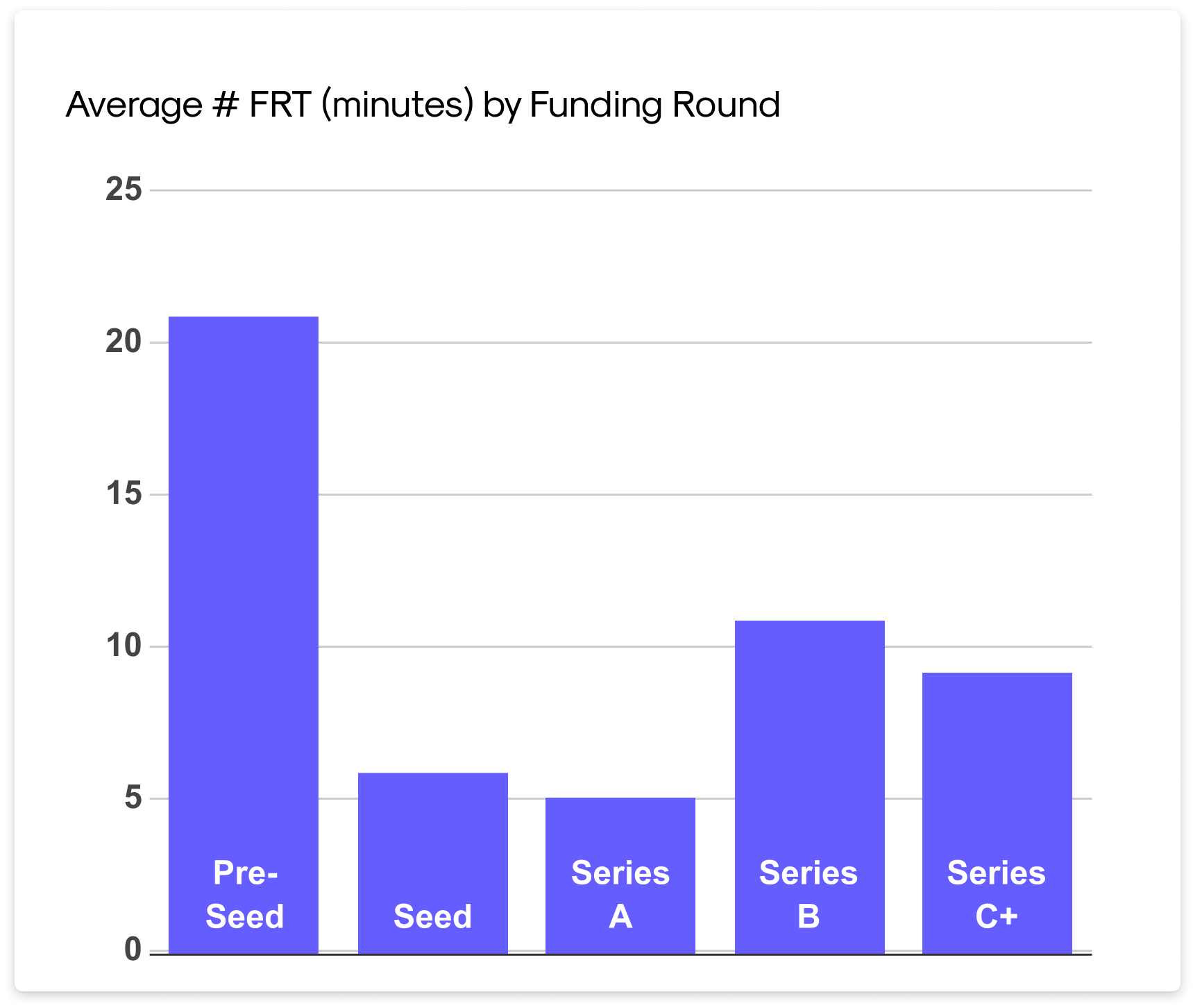
Pre-seed companies have higher FRTs, given that founders are doing support, and they don’t have any dedicated support staff just yet. This surprised us a bit. We expected that Pre-Seed founders would be more attentive to customer requests and faster to respond.
Fintech companies have quick FRTs even with 200+ Slack channels
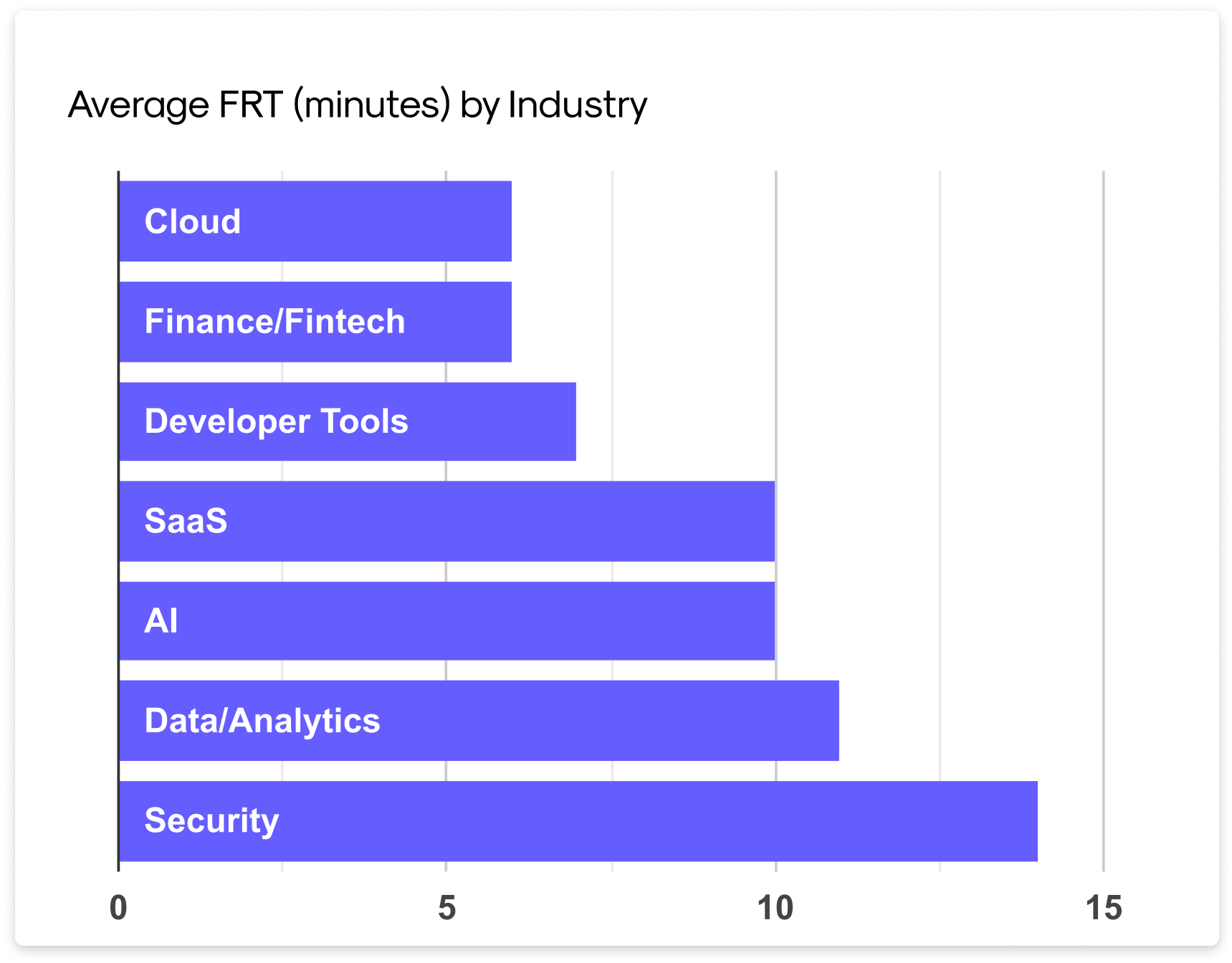

The Time to Resolution is a bit varied depending on company size and industry. Our customers are primarily B2B tech companies so resolutions take longer, especially for more late stage customers working with bigger enterprise clients.
Seed - Series A companies excel in Slack TTR
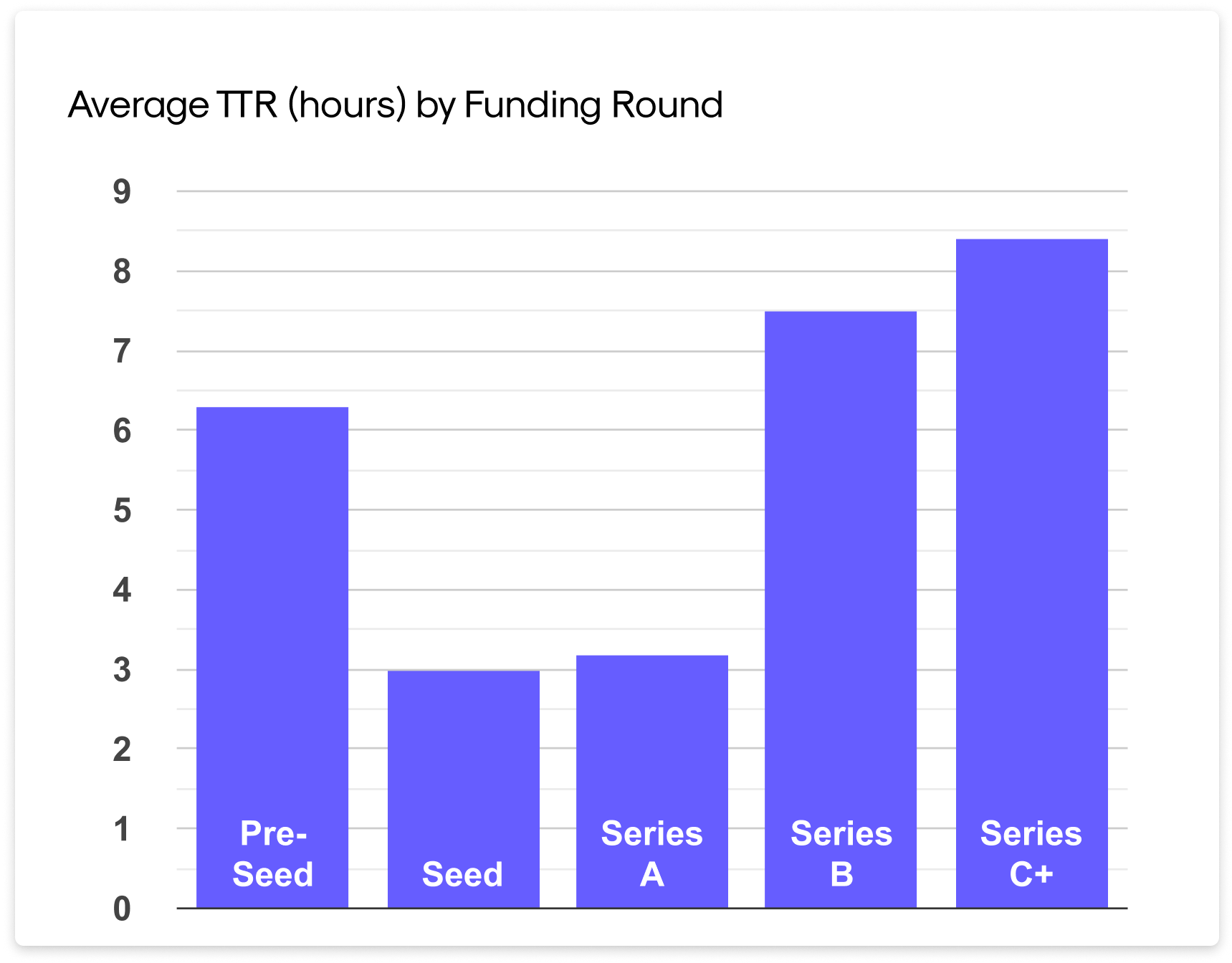
TTR varies quite a bit based on industry
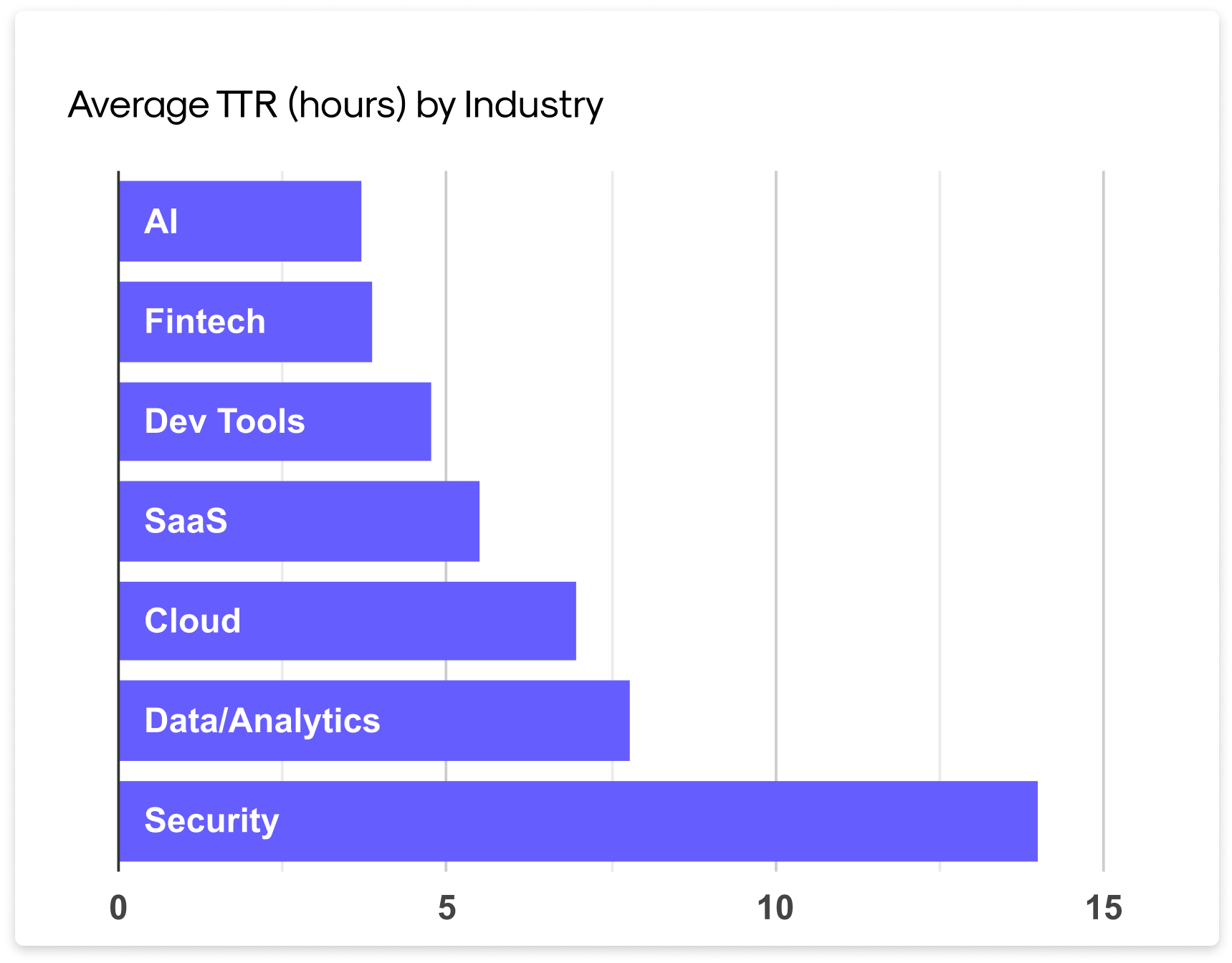
Can you resolve everything on Slack?
You should aim to meet customers where they are. If you’re a B2B tech company selling to western companies, your customers are likely using Slack or Microsoft Teams internally, and will love it if you offer it as a channel. They may even pay a premium price to get support on Slack.
Cases where you should not offer Slack support include:
- Your customers don’t use Slack internally
- You sell to a non-western audience (they likely prefer WhatsApp)
- Your customers are all self-serve (consider opening a Slack Community or offering In-App Chat)
Looking again at our top 100 power users of Slack support, the majority of their volume comes from Slack (~85%) followed by Email (9%) and In-App Chat (2.6%).
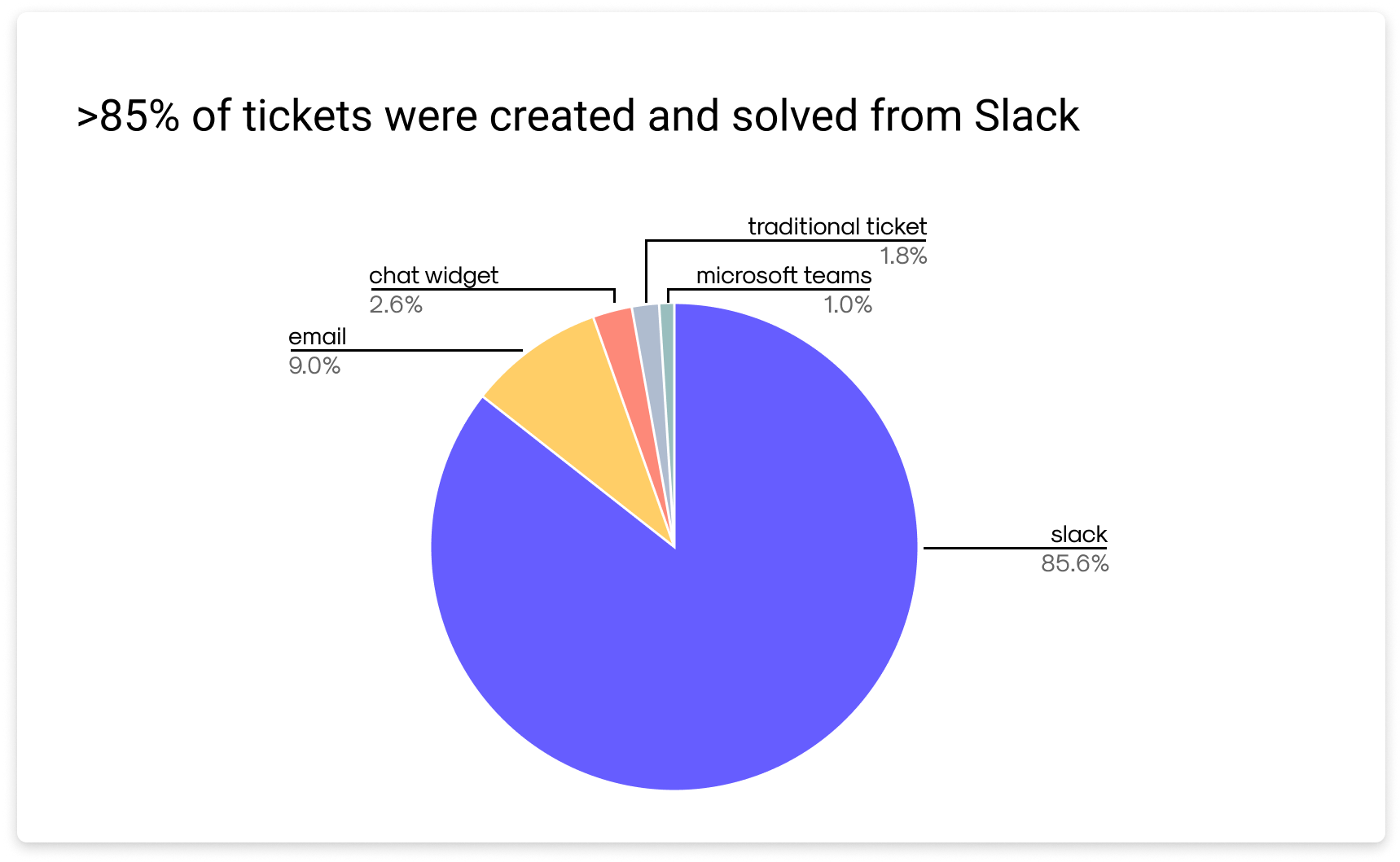
Pylon customers also offer support over other sources like Microsoft Teams, In-App Chat, Email, and Ticket Forms. In general, we see more modern channels like Slack and Teams have a faster FRT and TTR.
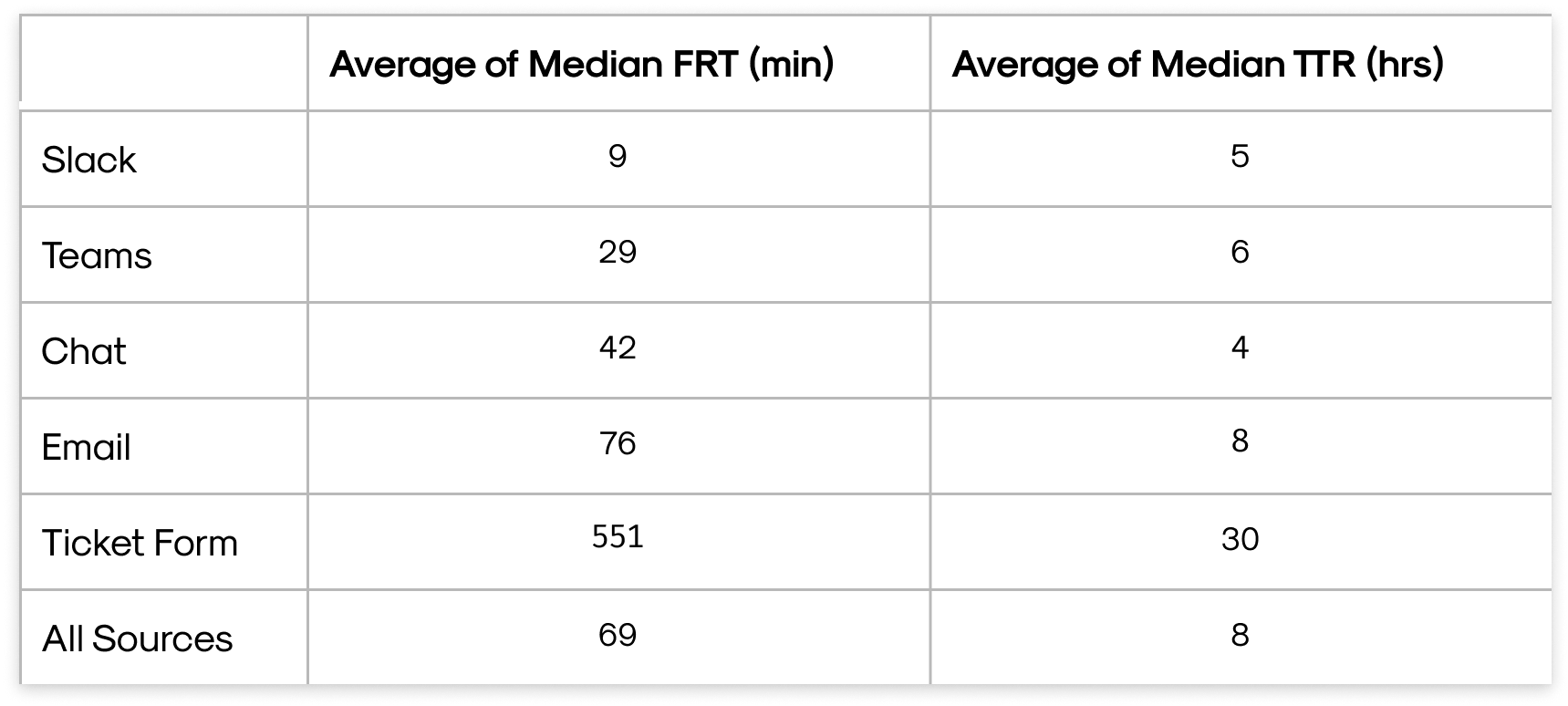
Need help scaling Slack support?
If you have over 50 customer Slack channels, offer multiple channels of support (Email, In-App Chat, etc.), or are looking for your first CS hires, you’re going to need a support platform with all the benefits of a ticketing system that can integrate with customer Slack channels.
Pylon can help. We’re a San Francisco based startup backed by the best investors in the world including a16z, General Catalyst, and Y Combinator.
We’ve built the first support platform for B2B companies and are making it easy to provide a premium experience to your customers.













